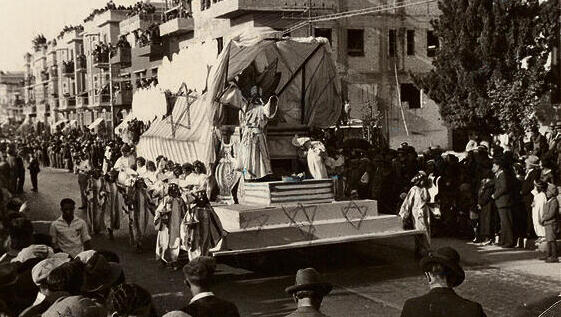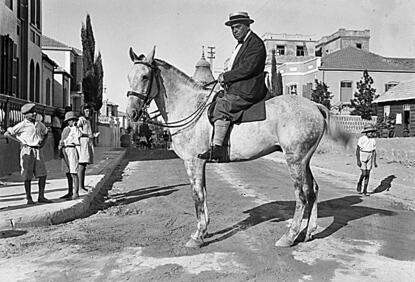For several years, starting in the mid-1920s, as part of the Purim parades in Tel Aviv, Queen Esther was crowned annually. A special artistic crown was placed on her head, which is now displayed at the Tel Aviv Yafo City Museum alongside other items and photographs from the history of the Adloyada parade
The roots of the colorful Adloyada parade are embedded in early Tel Aviv. The first parade took place in 1912, and during the 1920s and 1930s, it became a tradition. After the establishment of the State of Israel, the parades were held in various cities across the country.
In the 1920s, Baruch Agadati, one of the pioneers of Israeli dance and cinema, began organizing large-scale Purim balls in Tel Aviv. In 1926, for the first time, a beauty contest was held at the ball, in which Queen Esther was crowned. Agadati attempted to merge Jewish tradition with the beauty contest, but he faced sharp criticism for adopting a foreign custom.
The Purim celebrations from 1926 to 1931 included the crowning of the Hebrew Queen Esther, who led the parade wearing the Queen Esther crown — an artistic creation designed by the artist Haim Israel.
The crown, made of silver threads interwoven with gemstones, became one of the symbols of the celebrations. At the time, the mayor of Tel Aviv, Meir Dizengoff, rode on horseback at the head of the procession and presented the crown to the chosen queen in a grand ceremony. Among the title winners was Riketa Chelouche, daughter of Avraham Haim Chelouche, one of Tel Aviv’s founders.
3 View gallery


Queen Esther's crown
(Photo:Naomi Polani Collection Tel Aviv History Museum, Courtesy of Muza, Eretz Israel Museum)
Get the Ynetnews app on your smartphone: Google Play: https://bit.ly/4eJ37pE | Apple App Store: https://bit.ly/3ZL7iNv
The beauty queens of that era became city icons, and over the years, the Queen Esther crown was passed from one winner to another—until at some point, it disappeared and was forgotten. Many years later, the crown resurfaced when an anonymous individual approached the Museum of the History of Tel Aviv and offered to sell it for several tens of thousands of shekels.
The museum, unable to afford the sum, turned to the Chelouche family, who donated the money in memory of Riketa, who had passed away at a young age. After a meticulous restoration process, the Queen Esther crown is now on display at the Tel Aviv-Yafo City Museum, one of five cultural institutions in Bialik Square.
The Queen Esther crown is exhibited alongside Meir Dizengoff’s saddle as part of the museum’s permanent historical exhibition. The crown tells the story of early Tel Aviv and the festive traditions that became a national symbol.



